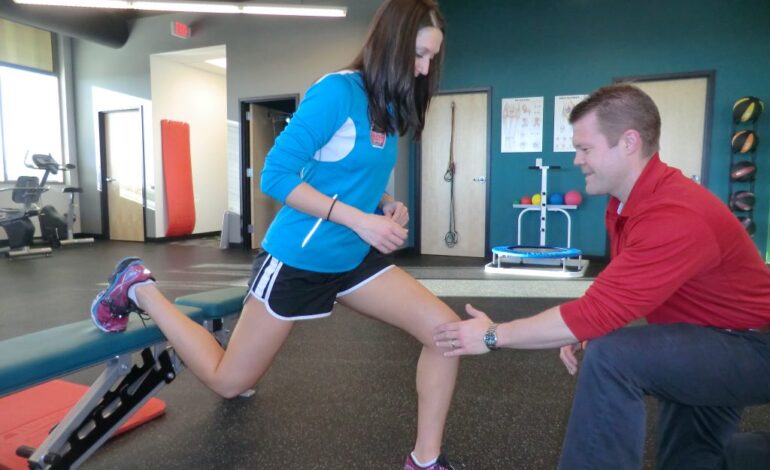From Sidelines to Spotlight: Inspiring Athlete Comebacks

The Incredible Resilience: Comeback Stories of Injured Athletes
Sports, at their highest level, demand incredible physical and mental fortitude. We celebrate peak performance, record-breaking achievements, and the thrill of victory. But often overlooked, and perhaps even more inspiring, are the stories of athletes who face devastating injuries and embark on the arduous journey back to competition. These aren’t just tales of physical rehabilitation; they’re testaments to the human spirit, unwavering determination, and the power of hope. This post delves into the world of athletic comebacks, exploring the challenges, the triumphs, and the lessons learned from those who have stared adversity in the face and refused to be defeated.
The Psychological Toll of Injury
Before even considering the physical aspects, it’s crucial to understand the profound psychological impact an injury can have on an athlete. For many, their identity is deeply intertwined with their sport. An injury isn’t just a disruption to training; it’s a threat to their sense of self, their livelihood, and their future. The initial shock and denial are often followed by anger, frustration, and even depression. The fear of not returning to their previous level of performance, or worse, not returning at all, can be crippling.
The isolation can be intense. While teammates continue to train and compete, the injured athlete is often relegated to the sidelines, watching from afar. This separation can lead to feelings of loneliness and disconnect. Successfully navigating this psychological landscape is often the first, and arguably most important, step towards a full recovery. Access to sports psychologists and mental health professionals is becoming increasingly recognized as vital for injured athletes. They provide coping mechanisms, help manage anxiety, and rebuild confidence.
The Grueling Road to Physical Recovery
Once the initial emotional hurdles are addressed, the real work begins: physical rehabilitation. This is rarely a linear process. There are good days and bad days, setbacks and plateaus. The monotony of repetitive exercises, the pain, and the constant reminders of what the body *can’t* do yet can be incredibly discouraging.
A well-structured rehabilitation program is paramount. This typically involves a team of professionals: doctors, physical therapists, athletic trainers, and strength and conditioning coaches. The program must be tailored to the specific injury, the athlete’s sport, and their individual needs. Early stages focus on reducing pain and inflammation, restoring range of motion, and preventing further damage. As the athlete progresses, the focus shifts to rebuilding strength, endurance, and sport-specific skills.

Progressive overload is a key principle. This means gradually increasing the intensity and volume of training to challenge the body and stimulate adaptation. However, it’s a delicate balance. Pushing too hard too soon can lead to re-injury, setting the recovery process back significantly. Listening to the body and respecting its limits is crucial.
Iconic Comeback Stories: Inspiration in Action
Throughout sports history, we’ve witnessed countless inspiring comebacks. Here are just a few examples:
- Lance Armstrong (Cycling): While his legacy is now heavily debated, Armstrong’s initial comeback from testicular cancer to win the Tour de France seven consecutive times was a remarkable feat of athleticism and determination.
- Kurt Warner (NFL): Warner’s story is legendary. He went from stocking shelves at a grocery store to leading the St. Louis Rams to a Super Bowl victory, after years of playing in arena football and facing numerous setbacks.
- Maria Sharapova (Tennis): Sharapova overcame a shoulder injury that threatened to end her career, returning to win multiple Grand Slam titles.
- Sidney Crosby (NHL): Crosby battled post-concussion syndrome for years, facing uncertainty about his future. He persevered and continued to be one of the NHL’s most dominant players.
- Alex Smith (NFL): Perhaps one of the most dramatic recent comebacks, Smith suffered a devastating leg injury that required multiple surgeries and threatened his life. He remarkably returned to play in the NFL, even leading his team to a playoff berth.
These athletes, and many others, demonstrate that setbacks don’t have to be the end of the story. Their resilience, dedication, and unwavering belief in themselves serve as a powerful source of inspiration for athletes and individuals facing challenges in all walks of life.
The Role of Support Systems
No athlete can navigate a comeback alone. A strong support system is essential. This includes family, friends, coaches, teammates, and medical professionals. Having people who believe in you, offer encouragement, and provide practical assistance can make all the difference.
Coaches play a particularly important role. They can provide guidance, motivation, and a realistic assessment of progress. Teammates can offer camaraderie and a sense of belonging. And family and friends can provide emotional support and help with the everyday challenges of recovery.
Lessons Learned: Beyond the Playing Field
The lessons learned from athletic comebacks extend far beyond the realm of sports. These stories teach us about the importance of perseverance, resilience, and the power of the human spirit. They remind us that setbacks are inevitable, but they don’t have to define us. The ability to overcome adversity, to learn from our mistakes, and to keep moving forward is a skill that can be applied to any aspect of life.
The journey back from injury is often a transformative experience. Athletes who have faced and overcome significant challenges often emerge stronger, more resilient, and with a deeper appreciation for the game they love. Their stories are a testament to the enduring power of hope and the unwavering pursuit of dreams.



